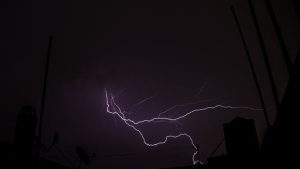“Dark Sky” Tourism: Stargazing in Light-Pollution-Free Zones
Many of us live in cities and urban areas where light pollution is so prevalent that we rarely get a glimpse of the stars in the night sky. However, for those seeking a break from the hustle and bustle of the city and the chance to reconnect with nature, “dark sky” tourism is a growing trend. This unique form of tourism offers travelers the opportunity to stargaze in light-pollution-free zones, where the night sky is at its brightest and most magnificent. In this article, we’ll explore the concept of “dark sky” tourism and take a closer look at the best destinations for stargazing in light-pollution-free zones.
The Rise of “Dark Sky” Tourism
With the growing awareness of light pollution and its effects on our environment and health, more and more travelers are seeking out destinations where they can experience truly dark skies. The International Dark-Sky Association (IDA) defines a dark sky as “an area with an absence of artificial light during nighttime, allowing for clearer views of the stars.” Over the years, the IDA has designated several locations as “Dark Sky Parks” and “Dark Sky Reserves” as part of their mission to preserve dark skies and combat light pollution.
The Appeal of Stargazing in Light-Pollution-Free Zones
Stargazing in a light-pollution-free zone offers a unique experience for both amateur astronomers and casual travelers. The dark sky allows for an unobstructed view of constellations, planets, and other celestial objects, making it an ideal location for stargazing and astrophotography. Moreover, the peaceful and tranquil setting of these dark sky destinations allows for a complete immersion in the natural world, away from the bright lights and noises of city life.
Best Destinations for “Dark Sky” Tourism
1. NamibRand Nature Reserve, Namibia
The NamibRand Nature Reserve in Namibia is often hailed as one of the best locations for stargazing in the world. This protected area is home to some of the darkest skies and least light-polluted regions on Earth. Visitors can experience breathtaking views of the Milky Way, constellations, and shooting stars in this secluded and pristine environment.
2. Aoraki Mackenzie Dark Sky Reserve, New Zealand
Located in the South Island of New Zealand, the Aoraki Mackenzie Dark Sky Reserve was designated the world’s largest dark sky reserve by the IDA in 2012. With limited artificial light and clear weather conditions, this reserve offers a spectacular view of the Southern Hemisphere’s night sky. Visitors can also participate in stargazing tours and attend informative talks on astronomy.
3. Cherry Springs State Park, Pennsylvania, USA
Cherry Springs State Park in Pennsylvania, USA, is a popular destination for stargazers on the East Coast. This state park is designated as a Gold-Certified International Dark Sky Park by the IDA, making it one of the best stargazing spots in North America. Visitors can expect minimal light pollution, open vistas, and clear skies ideal for stargazing.
4. Isle of Sark, Channel Islands
The Isle of Sark in the Channel Islands is recognized as the first “Dark Sky Island” by the IDA. This small island boasts a population of fewer than 500 people, minimal light pollution, and strict lighting regulations to preserve dark skies. Visitors can take part in stargazing tours and witness the stunning sight of both the Northern and Southern Hemisphere’s stars.
Final Thoughts
“Dark sky” tourism offers a unique and awe-inspiring experience for travelers looking to escape the bright lights of the city. These destinations allow for a deeper appreciation of the natural world and a chance to reconnect with the night sky. So pack your stargazing gear and plan your next adventure to one of these light-pollution-free zones for an unforgettable experience.








